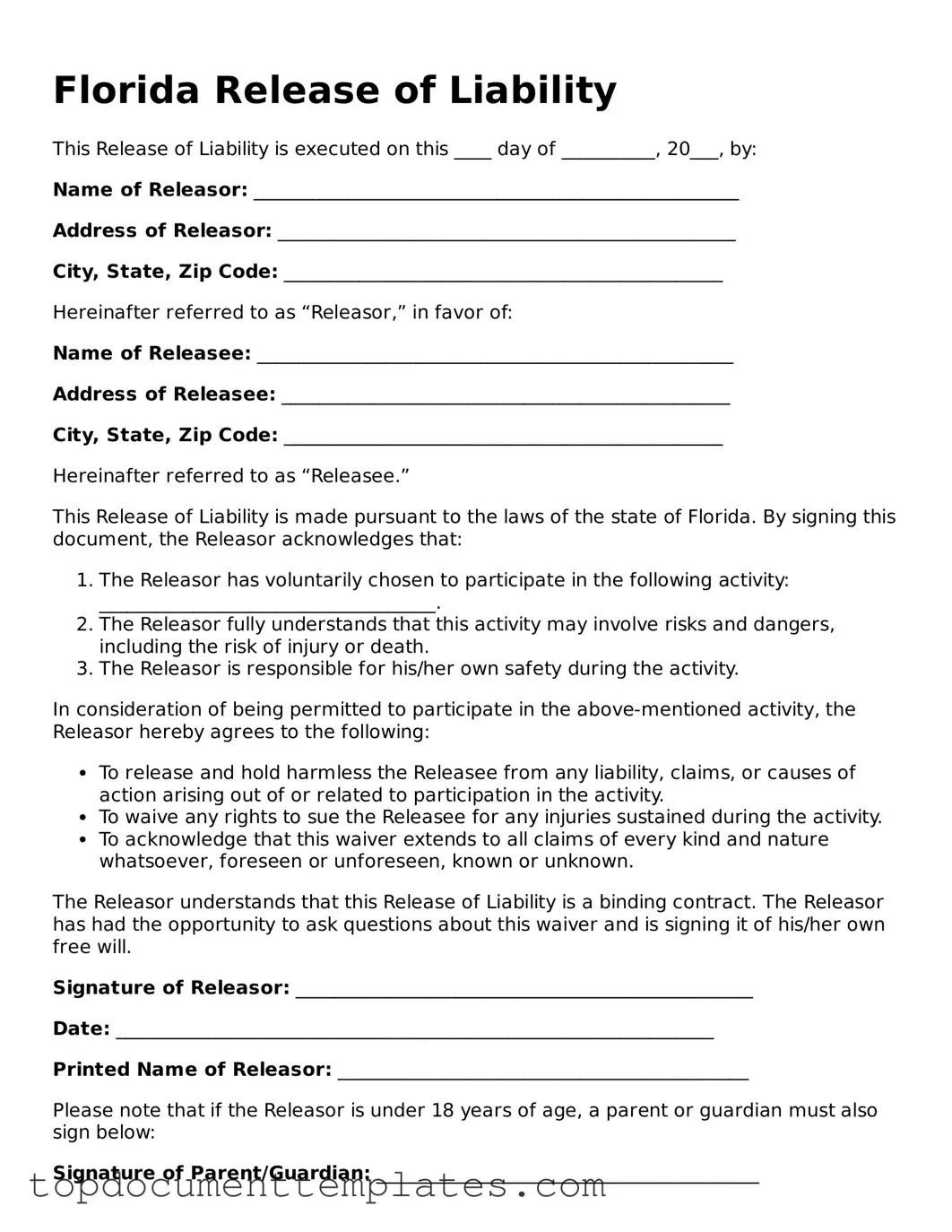Valid Release of Liability Form for Florida State
The Florida Release of Liability form is a legal document that protects organizations and individuals from claims resulting from injuries or damages that may occur during activities. By signing this form, participants acknowledge the risks involved and agree not to hold the provider responsible. To ensure your safety and understanding, consider filling out the form by clicking the button below.
Open This Form
